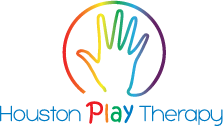This has been an unprecedented and unexpected time. Each and every one of us is working to readjust and best manage to support our families and ourselves. HPT’s Alessia Bulsara, M.Ed., LPC found an article on the Child Mind Institute website specifically addresses managing anxiety during this time. I find the suggestions are helpful, not only for anxiety, but as a blueprint of how we can all best support our kiddos. The link to the article is at the bottom of the post; some key points are highlighted below:
1. “As parents, we need to be modeling for our kids how to react to stressful times by coping with anxiety in healthy ways.”
The article often discusses “remaining calm” in front of our kids. While it is important to remain consistent and help provide an environment where the child feels safe and protected, it is also essential to model constructive and appropriate ways of managing big emotions that everyonefeels. This might look like saying something along the lines of, “Mommy/Daddy is feeling a bit mad right now. I need to take a break and take some deep breaths to feel better” while modeling taking deep breaths and narrating what is happening within your body. Not only will this provide your child with an example of how it is okay to have big feelings and the safe and appropriate ways to calm down, but it normalizes that EVERYONE has big feelings at some time or another.
2. “Establishing a routine that involves exercise, regular meals and healthy amounts of sleep are also crucial to regulating our moods and our worries. If your old routine is no longer possible because of COVID-19 precautions, look for ways to be flexible and start a new routine.”
Have a visual schedule for your child which you review with them each morning. If your child is demonstrating resistance to participating in activities, have them be a part of creating it- let them choose from a list of activities and decide when they want to do it!
3. “When kids are feeling anxious, it may or may not be clear to parents- we shouldn’t be looking for just one thing”.
Kids often have a difficult time pinpointing and expressing what they are feeling. When they are feeling anxious, or uncertain, it can manifest in a variety of ways. It might look like arguing, resistance, “clinginess” to parents, or big emotional outbursts. If you begin to notice changes in behavior, it can be helpful to note this and process/validate your child’s feelings. You might say something along the lines of, “"Things are really different right now. You're not at school, you're doing school from home all day, that might feel different- and even yucky! Right now, we are staying at home to be safe and to keep others safe while our doctors and scientists work to help stop the virus. This will not last forever".
4. “ Look for the positive.”
After acknowledging, validating and processing your child’s feelings (i.e. “It feels really hard to stay at home right now. You are sad because you miss your teachers”), help your child find a “positive”. This might look like- “I get to spend more time with my sister/brother!”, “I am getting some more sleep!”, “I am able to play with my dog during movement breaks!”.
Please reach out to any of the clinicians at HPT at any time with your questions or concerns. We are here to help support you!
